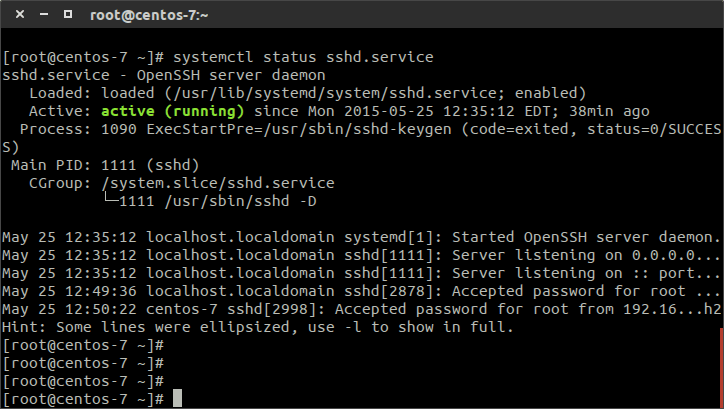Well, systemd is here. But, why should you care? If you’re going to use ubuntu 15.04+ or Centos 7, you’re gonna need systemd. Because these operating systems use systemd rather than init. Before we get into how to use systemd, we should have a basic idea about what it is. Systemd is a suite of daemons, libraries and utilities designed as a central management and configuration platform for the Linux computer operating system. There is a reason why you’re here, either you want to Learn about systemd or you just want to know how to get things done using systemd. The latter one is the most probable one. Let’s get started then.
Listing Services: Link to heading
To list all the services in your system, just use the command:
systemctl list-units --type service
You can also do a systemctl --help to display a brief list of supported commands.
This would display the currently loaded services.
Displaying the status of a service Link to heading
In init systems, we would simply do “service
systemctl status name.service
For example, if you wanted to know if sshd is running, you could use the following command.
systemctl status sshd.service
This would show something like this. Pretty detailed than init, huh?

Note: One thing to be noted that, as of now, even if you use the old “service sshd status” command, it would work. The system would just redirect the command to systemd. But, it is better to start using systemd rather than “service” itself.
How To Start / Stop A Service Using Systemd Link to heading
Yep, you guessed it right. To start the service, just use the following.
This would start the service “name”
systemctl start name.service
Example: To start sshd
systemctl start sshd.service
To stop a service Link to heading
systemctl stop sshd.service
This ain’t so difficult, is it? All ok, but what about chkconfig? Do we still have that?
Well, continue reading..
Enable or disable a service on boot Link to heading
If you want a service to be started automatically on boot, you would use this:
Enable a service Link to heading
systemctl enable name.service
Example: This would enable sshd to start on boot Link to heading
systemctl enable sshd.service
To disable a service on boot Link to heading
systemctl disable name.service
But wait, there’s more.
Masking a service Link to heading
This is an interesting thing. You can mask a service. What happens if you mask a service?
Well, if you mask a service, no one can start the service. When you mask a service, system
replaces the /etc/systemd/system/name.service file with a symbolic link to /dev/null ( The Linux blackhole ).
How to mask a service using systemctl Link to heading
systemctl mask name.service
To unmask it Link to heading
systemctl unmask name.service
Well, I guess that’s it for now. If you guys have any doubts, or opinion, leave a comment and I will try to respond to that. Thank you all.